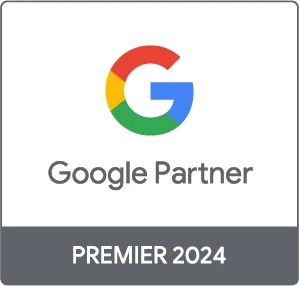SEO Glossary: 99+1 SEO terms in simple words
SEO terms come from a wide array of different fields including web development, data science and digital marketing. So, it’s no surprise that people often have a hard time seeing through the complex-looking SEO terms and recognizing the true value that SEO can offer.
If you’ve found yourself in this position, we’ve got good news.
Below you’ll find a concise glossary of SEO terms to help you navigate the space and decode search engine results.
# A B C D E F G H I J K L M N O P Q R S U V W X Y Z
SEO Terms in alphabetical order
Numerical
2xx status codes
Server codes that indicate a successful request
301 redirect
Server code indicating that a web page permanently redirects to another URL.
302 redirect
Server code indicating that a web page temporarily redirects to another URL.
4xx status codes
Server code indicating an unsuccessful request and failiure while retrieving information.
5xx status codes
Server code indicating a server-side error.
A
Accelerated Mobile Pages (AMP)
A framework designed to make web pages lighter and more accessible to mobile users.
Alt text
A small amount of text in your site’s HTML code that describes the content of an image. Search engines rely exclusively on alt text to “read” an image, so never forget to include alt text!
Anchor text
The text that users and search engines see when looking at a hyperlink. Basically, the anchor text of a link is that clickable blue text that sends you over to another page of the same website or a different domain entirely. Search engines use this text to understand the contents of the page a link leads to.
Authority
An algorithmically generated score that indicates how trustworthy and reliable a website is.
B
Backlink
A link leading to an external site. Also known as external links or outbound links.
Black Hat SEO
Misleading SEO practices that go against Google’s webmaster guidelines
Blog
A web page in which you can upload blog posts that cover specific topics.
(Hint: you’re in one right now.)
Bounce Rate
The rate of users abandoning a domain after viewing only one web page.
Breadcrumb
The link structure that helps you understand where you are on a website and how far your location is from the homepage.
Browser
The software that allows you to access addresses on internet.
C
Cache
A storage for temporary data that helps make your browsing experience faster by saving frequently/recently used data.
Canonical URL
The best representation of a page that belongs to a group of duplicates. If, for example, a group of web pages consists of one product category page and several pages with different filters (ex. price, color, type etc.), the category page is selected as the canonical URL and is the only one that search engines index from that group.
Compression
The process of encoding data so that it takes up less space without the need to remove elements. The most common application in SEO is image compression.
Click Through Rate (CTR)
The rate of users clicking on specific organic or paid search results. Acts as a good way to judge the quality of the page title and meta description used.
Content Gap Analysis
A method of auditing a web page’s existing content to identify “gaps” that can be imporved upon to better cover the topic. Content gap analysis can also be applied to find keywords that are not well covered by competitors and can thus be exploited with new content.
Conversion
When a user completes a set action deemed as important for his relationship with the brand. This could be making a purchase, filling out a contact form, opting in to a newsletter etc.
Cookies
A small amount of text sent to a user’s device by a web server and resent to the server when the users visits again. They are used to identify and better understand user behavior.
Crawlers
Search engine crawlers are used to accurately identify and index websites
CSS
A Cascading Style Sheet is code that determines the styling of a site (ex. fonts, colors, links)
D
De-index
When a search engine removes a websites ability to appear in search results.
Disavow
When a site administrator identifies low-quality or spam inbound links and signals the search engine to ignore them.
Domain
A site’s main address (ex. www.itrust-digital.com)
Domain Authority
Domain authority is a comparative metric first developed by Moz that is used by industry software to calculate a domain’s ranking potential.
Duplicate Content
When two or more pages of the same domain have the same or very similar content. Search engines consider this a negative indicator.
E
Engagement
When users interact with a brand’s content. Reacting or commenting on a post is a form of engagement.
External Links
External links are links in a domain that direct the user to another domain. Also known as backlinks or outbound links.
F
Featured Snippet
An organically generated snippet of content that appears at the top of a search engine results page.

G
Google Analytics
Google Analytics is a tool that helps site administrators look deeper into how users interact with their website and export valuable reports.
Google My Business
Google’s own digital business directory. Helps with directing users to a business’ brick-and-mortar location(s).
Google Search Console
A free tool offered by Google that helps with analyzing a site’s performance.
Google Tag Manager
A free tool that simplifies the use and management of tracking tags.
Guest Blogging
A common link building practice, guest blogging includes posting a blog post on another website’s blog and including an outbound link leading to the author’s own domain.
H
Header Tags
Small bits of code that differentiate headings and subheadings from paragraphs.
Hreflang
An HTML tag that tells search engines what the language of a page is.
HTML (code)
Hyper Text Markup Language is the fundamental code used to create websites. Search engines find and read this code to discern your site’s structural health and usability.
I
Indexing
The storing of information collected by search engine crawlers. In recent years Google has gradually shifted towards mobile-first indexing, using the mobile version of websites’ content for indexing.
Inbound link
Inbound links are hyperlinks from other domains that direct users to your website.
Internal Links
An internal link is a hyperlink that points users towards a page within the same domain.
J
JavaScript
A coding language that allows the use of dynamic elements in static pages.
K
Keyword Cannibalization
When several pages within a domain target the same keywords, inevitably competing against each other.
Keyword Density
The amount of times a particular keyword appears in a web page.
Keyword Difficulty
A metric that indicates how difficult it is for a page to rank for a particular keyword in organic search results.
Keyword Matrix
The practice of collecting the results of keyword research into a spreadsheet or other organizational program.
Keyword Research
The act of finding words and phrases that users are searching for and identifying which of those have good search volume. This can be achieved via tools like Google’s Keyword Planner and other online resources.
Keyword Stuffing
When a keyword is used too many times in succession. It is considered a black hat SEO technique used to manipulate search engine rankings.
L
Link Building
Link building doesn’t actually involve creating links to your website. On the contrary, it’s more about creating a strategy to attract links from other sites in order to boost authority.
Local SEO
An SEO strategy focused on boosting a site’s position in local SERPs.
Long Tail Keywords
Very specific and usually longer keywords that indicate a user is closer to purchase/conversion. Thorough keyword research should identify these keywords.
M
Metadata
Data that refers to and describes other data.
Meta Descriptions
One of the meta tags of a page, meta descriptions appear below title tags on search engine results pages. They are used to briefly describe the content of a web page.
Minification
The process of removing elements from a page’s code to make it lighter. Not to be confused with compression that attempts to make pages lighter without removing elements.
Mobile First Indexing
Google’s shift to crawling and indexing the mobile versions of web pages rather than their desktop counterparts.

N
No-Follow
A tag that instructs search engines to not pass any authority to the domain being linked.
O
Off-Page SEO
All the SEO techniques that can be used outside the actual site to improve its position on search engine results. These can include: link building, different forms of digital marketing,
On-Page SEO
All the SEO techniques that can be used within the site to improve its position on a search engine’s results. These can include: improving page speed, streamlining readability for users and search engines, creating a keyword-rich title tag and meta description etc.
Organic Search Results
The relevant search results that appear on a SERP exclusively due to keyword relevance. They usually appear below paid search results and any potential Google-made snippets.
Organic Traffic
Website visitors that arrive on page from organic search results. Organic traffic is perhaps the most important signs of a successful SEO campaign.
Outbound Links
Links that direct users to an different domain. Also known as backlinks or external links.
P
Page Speed
The time it takes a page to load and be usable. Page speed is a very important ranking factor.
PageRank
PageRank is a Google-made metric that reflects domain authority and overall SEO performance.
Panda
A previously separate algorithm that was used to identify black hat tactics, Panda is now part of Google’s core algorithm.
People Also Ask (PAA)
A Google feature that appears on SERPs and attempts to provide short answers to frequently seen relevant questions. These answers are excerpts from sites selected according to their relevance.
Pay-Per-Click Ads (PPC)
A staple of digital marketing, PPC ads are a form of paid promotion that bills advertisers every time a user clicks on their ad. Most digital marketing agencies use the Google Ads platform (some to an extent of considering themselves a Google Ads agency).
Q
Query
A search query is text put into a search engine by a user.
R
Ranking Factor
Aspects of a web page that search engines consider when calculating its position among search results.
Redirect
When upon visiting a URL the user is sent to another URL within the same domain. Usually done when the contents of a page are moved to a different address.
Referer
The address of a web page that led a user to your domain.
Responsive Design
A web development approach that employs more fluid elements that can better adapt to different devices. Google recommends using responsive design as a way to improve indexability and ease-of-use.
Robots.txt
A text file that tells search engine crawlers to avoid certain pages.
RSS Feed
A standardized framework for distributing content with their relevant links, titles and URLs. Content from different sources can be viewed in one page called an RS feed.

S
Search Engine Optimization (SEO)
The practice of changing different aspects of a web page to better adhere to the ranking factors of search engines. This is done in order to improve the organic position of a site within SERPs.
Search Engine Results pages (SERPs)
The page a user sees after inputting a query. Usually contains both paid and organic results.
Search Engines
A website that indexes addresses on the internet and maintains a searchable directory for users.
Search Intent
The reason why a user inputs a particular search term. Used to roughly gauge what the user intends to do (purchase, gather information etc.)
Search Query
Words or phrases typed into search engines by a user.
Search Result
Websites and paid advertising chosen by search engine algorithms according how relevant they are to the user’s search query.
Search Volume
An approximation of how many times a keyword is used per month.
Share of Voice
A metric indicating the control a domain has over a certain keyword or topic.
Social Media
Websites that act as a platform for socialization and the sharing of messages, posts, brands etc. Can be used to amplify your SEO efforts and assist in link building.
Spider
A search engine bot that visits and indexes web pages. Also known as a crawler.
SSL Certification
A digital protocol ensuring that data passed between user and sever cannot be intercepted by a third party. Is a confirmed Google ranking factor.
Structured Data
A term that refers to URLs that use schema markup, a code that helps the search engine’s algorithm better understand content. This is done in order to achieve better organic search results.
Subdomain
An extension added before a domain (ex blog.domain.com) that can help create different “spaces” within the same site.
T
Technical SEO
The aspect of Search Engine Optimization (SEO) that is concerned with monitoring and maintaining the tech side of a website. This can include link building, page speed, HTML tags, writing a accurate meta description and more.
Thin COntent
A page with very little and/or outdated content. In general, content that doesn’t enrich the experience of the user. Content should not be treated as a one-and-done solution. Instead keep tabs on keywords you rank for and regularly update important pages with content whenever you see traffic declining.
Time On Page
The average time users spend on any one page before moving towards another or leaving the domain.
Title Tag
An HTML tag used to provide a title to a particular web page. This title is visible within the browser window as well as any search engine results page with a relevant query.
Traffic
The amount of visitors to a website. All the pages within a domain that are indexable contribute to calculating traffic.
U
Unnatural Links
According to the Google Webmaster guidelines, any links that attempt to manipulate the search engine ranking of a page. This includes links that are bought, artificially created, acquired via link schemes etc.
URL
An address that specifies the location of a page within a computer network.
User Signals
Behavioral indicators used by Google to calculate a page’s rank. These can range from CTR to time on page, bounce rate etc.
UX (User Experience)
The field concerned with the experience a user has when interacting with a particular product, website etc. Considering that user signals are an important search engine ranking factor, UX and SEO are two interconnected fields.
W
Webmaster Guidelines
A set of best practices outlined by Google to help website administrators better optimize for search engine algorithms. Google also provides a set of tools via the Search Console (previously known as Google Webmaster Tools) that help with measuring a site’s performance, site speed and other metrics that give a better picture as to what needs improving within a website.
White-Hat SEO
SEO practices that don’t rely on subverting and tricking the web crawler and other aspects of Google’s algorithms. All major search engines provide guidelines that help webmasters better understand the limits of white-hat SEO.
X
XML
A programming language used to describe and structure data.
XML Sitemap
A file that uses XML to list a site’s most important pages. Almost always includes multiple pages.
Z
Zero Click Searches
A Google search that ends without a user clicking through to any of the presented results. Data from 2020 suggests that as much as two thirds of searches end as zero click largely due to increasing use of features like People Also Asked boxes and featured snippets by Google.
We hope this glossary of terms helped you better understand and participate in the discussion around Search Engine Optimization (SEO). This page was compiled with the purpose of acting as a database of information to visit and re-visit whenever you read an unknown term, so don’t forget to bookmark! Now that you’re all caught up, why not visit our blog for more posts about recent developments in the space? If you feel ready to make your first move, you could also contact us to learn first-hand what an SEO agency can offer to your brand.






